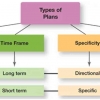DEFINITION OF LANGUAGE LEARNING STRATEGY
A number of definitions of language learning strategies have been used in the field of second language research and the definition literally becomes a 'fluid concept' (Gu, 2003). Derry & Murphy (1986, p. 2) defined a learning strategy as "a collection of mental tactics employed by an individual in a particular learning situation to facilitate acquisition of knowledge or skill". Rubin (1987) stated that language learning strategies "are strategies which contribute to the development of the language system which the learner constructs and affect learning directly" (p. 22).
O'Malley and Chamot (1990) later defined language learning strategies as "the special thoughts or behaviours that individuals use to help them comprehend, learn, or retain new information" (p. 1). According to Oxford (1993, p.18), language learning strategies are "specific actions, behaviours, steps, or techniques that students (often intentionally) use to improve their progress in developing second language skills. These strategies can facilitate the internalization, storage, retrieval, or use of the new language.
Strategies are tools for the self-directed involvement necessary for developing communicative ability." Finally, Cohen (1998) defined learning strategies as "the steps or actions consciously selected by learners to improve the learning of a second language, the use of it, or both" (p. 5).
The above definitions show that the concept of learning strategies has been refined from the early focus on mental processes to the focus on actions and processes, from unconscious to intentional. Meanwhile, learning strategies should not be confused with learning styles, which refer more broadly to a learner's preferred way of approaching new information (Salvisberg, 2005, p. 2), "though there appears to be an obvious relationship between one's language learning style and his/her usual or preferred language learning strategies" (Lessard-Clouston, 1997, p. 2)
CHARACTERISTICS OF LANGUAGE LEARNING STRATEGY
Authors use diverse terms to refer to the concept of learning strategies. Some refer to strategies as 'skills', 'tactics', or 'techniques' while others call them 'learner strategies' 'learning strategies' or 'language learning strategies' (Gu, 2003). Despite all the variations, a common core is that learning strategies are cognitive skills or processes of the mind that are used to enhance learning or understanding. Lessard-Clouston (1997) summarized the basic characteristics in the generally accepted view of language learning strategies.
First, language learning strategies are consciously generated by learners; they are actions or steps taken by language learners to facilitate learning tasks. Second, language learning strategies enhance language learning and help develop the learner's skills in listening, speaking, reading, or writing the second language. Third, the main goal of language learning strategies is to affect the way in which the learner selects, acquires, organizes or integrates new knowledge (vocabulary knowledge, grammar rules, etc.).
Fourth, language learning strategies may be visible behaviors, steps and techniques or unobservable thoughts and mental processes. Finally, the other generally accepted features of language learning strategies include allowing learners to become more self-directed, expanding the role of language teachers, being problem-oriented, flexible and teachable (Oxford, 1990, p. 9).
CATEGORIES OF LANGUAGE LEARNING STRATEGY
The classification scheme proposed by Rubin (1981) is one of the earliest and subsumes learning strategies under two broad primary categories: strategies that may contribute directly to learning and those that may contribute indirectly to learning. The first primary category of direct strategies, with its substrategies, has a cognitive orientation and suggests considerable scope for self-awareness in the process of learning. The direct strategies, according to Rubin (1981), emphasize on-the-spot learning.

![Steam and Schemes [4]](https://assets-a1.kompasiana.com/statics/2019_kompasiana/desktop/images/headline-blank-vsmall.jpg?t=t&v=100&x=100&info=meta_related)







